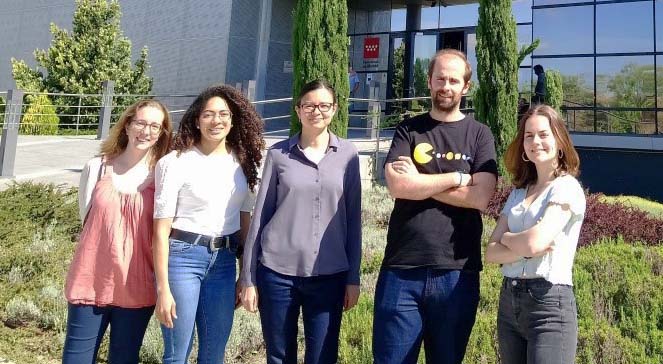
We develop novel methods, typically based on light, to study biology and biomaterials at the nanoscale. Our current research lines are:
- Novel methods for super-resolution imaging. Super-resolution fluorescence microscopy techniques are able to image (biological) structures with a spatial resolution of tens of nm, one order of magnitude better than standard fluorescence microscopy. In our group we develop novel methods that extend the application of super-resolution microscopy. A few years ago we were able to image for the first time directly-labelled DNA with a spatial resolution below 40 nm. Currently, we use correlative super-resolution fluorescence imaging and atomic force microscopy (AFM) to develop and validate novel labelling methods in super-resolution microscopy, most recently for amyloids.
- Single-cell real-time imaging of bacterial death processes. We are also interested in using advanced microscopy to study bacterial death processes at the single-cell level and with temporal resolution. We have developed labelling strategies to follow the effects of antimicrobial treatments in bacteria in real-time. Moreover, using combined fluorescence and AFM, we have studied mechanically-induced bacterial death, which is relevant in the context of mechano-bactericidal nanomaterials, and quantified the forces involved in this process. The mechanistic understanding provided by these advanced microscopy methods may help in the design and implementation of improved bactericidal strategies.
Updated information can be found here: https://imdeananotools.wixsite.com/flors




